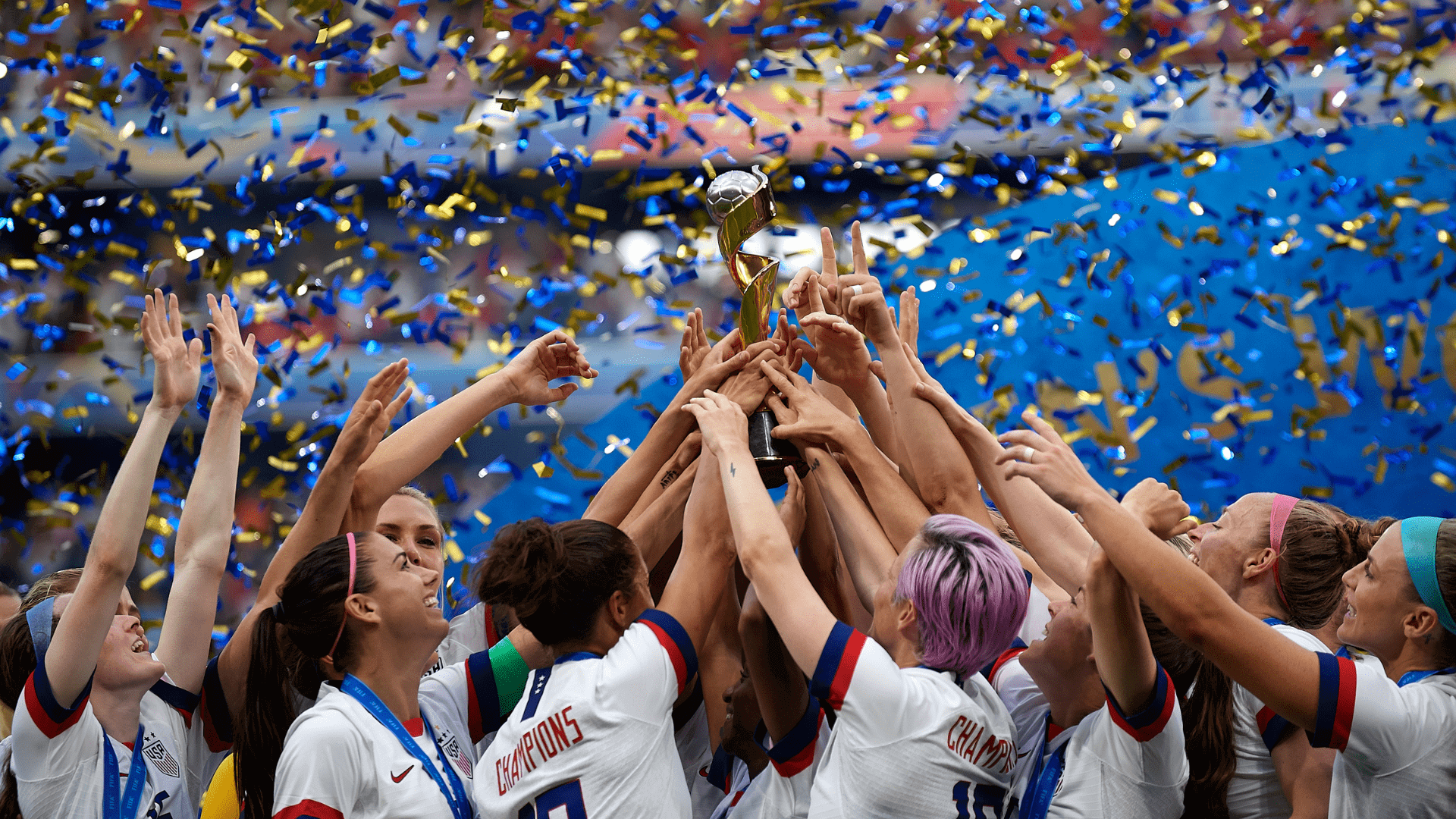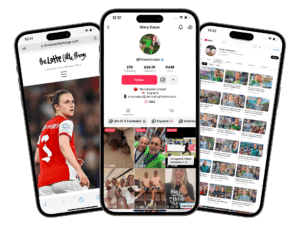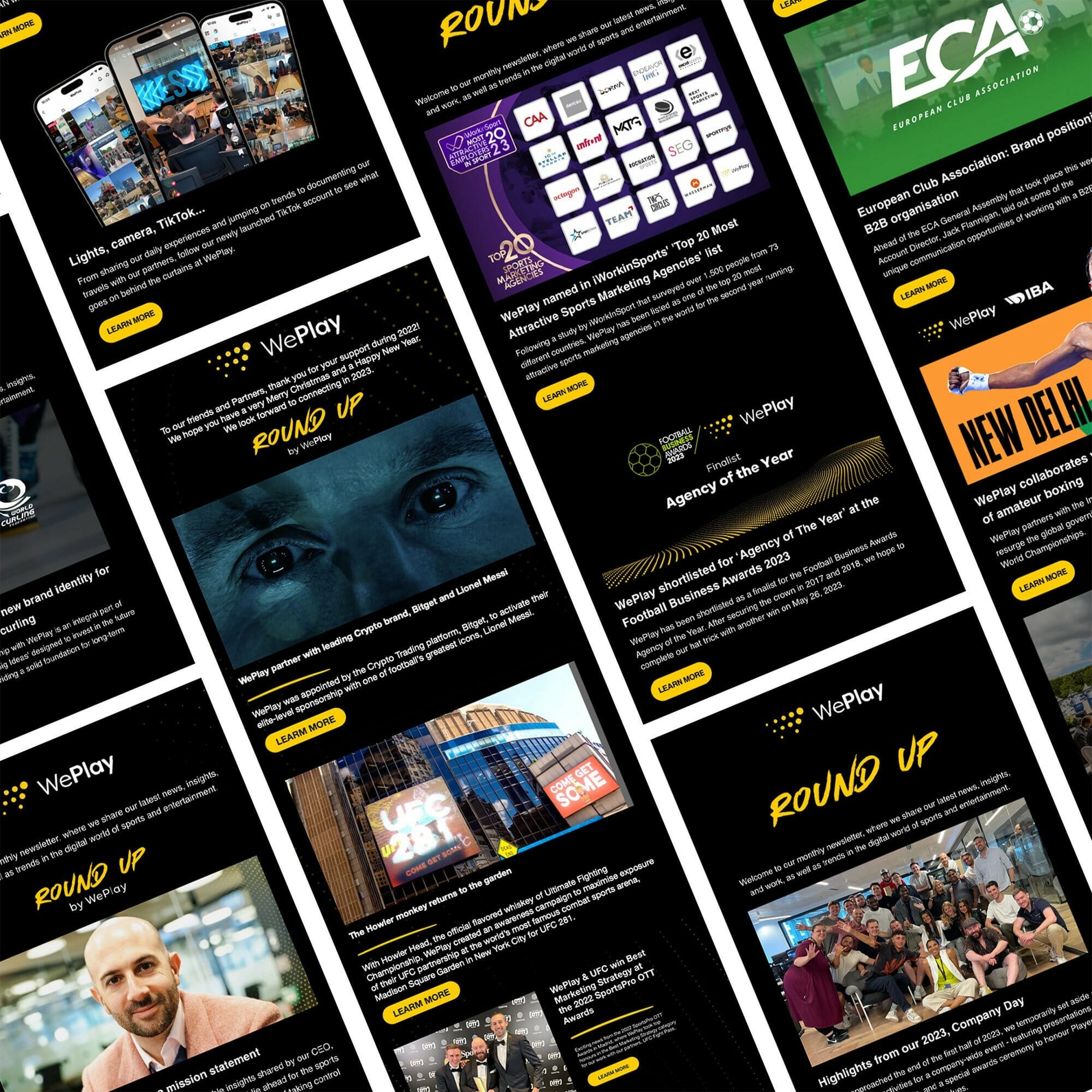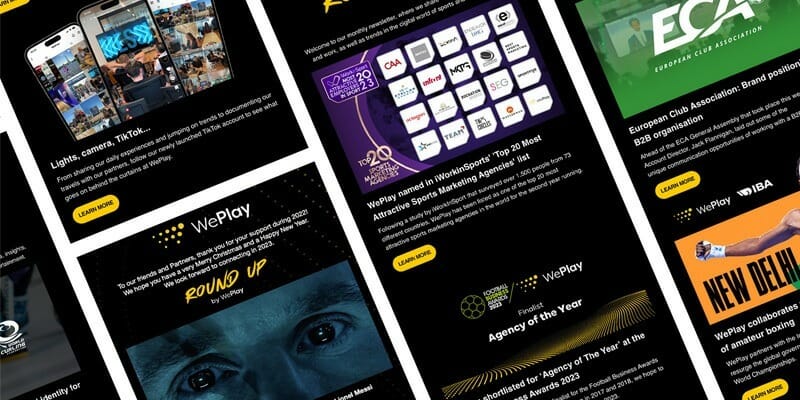
Capitalising on the Women’s World Cup wave: engaging women’s football fans
As the anticipation for the upcoming Women’s World Cup reaches fever pitch, women’s football has become a central topic of discussion.
Recently, WePlay was invited to be a VIP guests at the Unofficial Partner podcast episode ‘The Women’s Football Brainstorm’ to build the future of women’s football live on stage at DAZN London HQ and also worked alongside our partners the European Club Association (ECA), at their first ever Women’s Football summit.
 Collectively, something that emerged from these experiences is the undeniable distinctiveness of the women’s football ecosystem, driven by a unique core consumer.
Collectively, something that emerged from these experiences is the undeniable distinctiveness of the women’s football ecosystem, driven by a unique core consumer.
Following the post-2022 Women’s Euros, when brands rushed to seize the immense popularity of the sport, it becomes important for brands and clubs to proactively understand women’s football fandom before the World Cup tournament concludes.
Based on my personal experience in growing a women’s football online community and the lessons learned from these recent events, I will outline several of these insights in this blog post on how to engage with this audience effectively.
Content consumption patterns
When it comes to women’s football, a noteworthy intricacy emerges in the distinctive content consumption behaviours exhibited by female fans.
About one-third of women’s football fans are new to the sport, largely due to increased visibility, especially on social media.
Unlike traditional male football fans who grow up with the game, attending matches and listening to the radio, women’s football fans have had limited exposure on television until recently.
However, social media has played a significant role in changing this landscape. There has been a surge in interest and increased visibility – at the Unofficial Partners Women’s Football Brainstorm, it was revealed that YouTube experienced a doubling of views for women’s football from Q3 to Q4 last year.
This rise in viewership has also resulted in two additional distinctive characteristics of the audience: they tend to be younger and are highly tech-savvy. Interestingly, there are many similarities between the way women’s football fans consume and engage with content and young men’s football fans.
Therefore, clubs or brands aiming to engage this audience need to prioritise a social media-focused strategy, paying close attention to emerging platforms that cater to the younger, tech-savvy audiences such as TikTok and now Threads, for example.
 The perfect match
The perfect match
Our partners, TikTok, recently visited to share insights on viewership trends in women’s football tournaments.
Their findings further emphasised the importance of engaging with these audiences on ‘newer’ platforms.
They revealed that 58% of TikTok’s users are female, and 55% of users express a desire to explore TikTok content that enhances their sports knowledge.
This aligns perfectly with the fact that one-third of the women’s football audience is relatively new – emphasising that there is still a vast amount to explore, making the platform an ideal companion for this journey of discovery.
An excellent example of a club effectively leveraging TikTok to engage women’s football is the partnership between Burnley F.C. and TikTok.
Burnley FC live-streamed every women’s game on TikTok, resulting in over a million unique views throughout the 2021/22 season. This initiative demonstrated their recognition of the way women’s football communities consume content.
Content preferences
In addition to their content consumption patterns, women’s football fans also have distinct preferences when it comes to the type of content they want to consume.
While there are similarities with typical men’s football audiences, such as an interest in tactics and goals there are a lot of notable differences.
I gained first-hand insights in my previous role when I worked for a brand dedicated to showcasing football skills. I was involved in launching a women’s football version of the channel, with the aim of applying a similar social media strategy.
But, we discovered that the content didn’t resonate as effectively with the women’s football community.
The audience are interested in the personal stories surrounding players, the progress of the game, and the personalities within the sport – something DAZN has successfully captured across their channels well.
They are also more likely to demand content that resonates with the sport as a whole and aligns with broader purpose of growing the game, rather than being solely focused on specific teams.
Accessibility to players
Building upon the concept that fans place greater importance on the sport and its athletes rather than rigid team affiliations, the women’s football audience has been described as player-first.
Fortunately, unlike some male counterparts, female players are much more accessible when it comes to content creation and are actually great co-creators. One of the reasons for this accessibility is that players, much like their fans, have been fighting a similar battle – increased exposure. They will participate purely out of their love for the game, as the financial rewards are often inadequate. These players go beyond being excellent at co-creating; they also proactively create content on their own.
Simply search for Lotte Wubben-Moy’s blogs on Google, Mary Earps on TikTok, or visit Ruesha Littlejohn’s YouTube channel.
These players are motivated by their passion, a desire to gain more visibility, and a commitment to offer fans exclusive content, something that many brands and clubs often neglect to provide.
Authentic brand activations
At the ECA Women’s Football Summit, there was a discussion around brand activations and content collaborations – highlighting the importance of unique branding collaborations for women’s football.
One key takeaway from the Unofficial Partner live podcast – was the effective types of brand activations in women’s football.
Recent research by the Women’s Sports Trust revealed that women’s sports fans want prominent brands to be involved, particularly for raising awareness. However, these brands need to be authentic and contribute positively to the sport.
Women’s sports audience desires smaller, niche brands that activate in interesting ways and drive genuine impact.
Understandably, women’s football fans feel a sense of protectiveness toward the sport, desiring purpose-driven initiatives that support its long-term growth instead of short-term monetary gain.
While some brands have excelled at this, clubs have struggled to make this transition. Creating content for this niche audience is challenging for clubs that have only ever focused on catering to devoted men’s football audience who are not particularly purpose-driven.
Harnessing the power
To capitalise on the momentum of the Women’s World Cup, brands and clubs need to proactively understand how to effectively engage with the female football fan base.
While some brands have successfully done this, there is a need for a shift in the club system’s commercial approach to cater to this audience.
There is a tremendous untapped opportunity in women’s football that holds the potential for significant monetisation. During the ECA Women’s Football Summit, Vinai Venkatesham, the CEO of Arsenal, disclosed that women’s football fans typically spend more money on game days and numerous studies also show these fans are more inclined to purchase products endorsed by sponsors compared to followers of men’s sports.
The key lies in understanding how to effectively engage with this growing fan base and it is crucial to approach this with precision—identifying the platforms where the audience thrives, understanding their content preferences, leveraging the accessibility of players, and implementing genuine brand activations.
Find out more about our involvement at the ECA Women’s Football Summit here.




